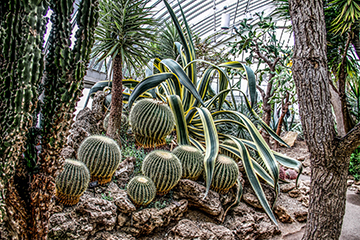Water is an essential part of a healthy lawn, we all know that.
But...
Water shortages caused by local restrictions or hot summer droughts can really take a toll on an otherwise healthy lawn and garden.
You might be wondering if your favorite plants will even live through summer.
Don’t be disheartened, maintaining a healthy lawn during a drought doesn’t have to be difficult. People have been developing drought tolerant landscapes for decades.
There are many solutions you can use to maintain a beautiful lawn in low water situations. Best of all maintaining a drought tolerant garden doesn’t have to be expensive.
More importantly, creating a drought tolerant lawn, can simplify lawn care. For many homeowners this home improvement can mean less stress.
What techniques can you use to save your landscape in the heat of a drought?
Let's Find out...
Know your climate-
One of the most important things to consider when making a healthy lawn is to understand what the climate you are growing in is.
Is your lawn or garden full sun, part sun, or shade?
How much rain will your garden get?
What are your soil conditions?
Heres the thing, understanding your climate before planting new plants in your landscape can save you time and money, and get you the results you are looking for.
Be sure to know the answers to these questions before using this next step...
Select climate appropriate plants
If you are worried about your garden surviving a drought here is some good news!
Once you understand your climate, there are 100's of plants that you can survive with very little water.
For your Garden, choose drought-tolerant plants like,
- Roemer's false indigo
- Hummingbird bush
- Square-bud primrose
- Butterfly bush
- Tall grasses
- Cactuses
- Succulents
Those, of course, are just a few. Here is a great list of drought-resistant plants.
For your lawn, select drought-tolerant grass seeds such as,
- Bermuda Grass
- Buffalo Grass
- St. Augustine's Grass
- Rye Grass
- Seashore paspalum
There are many drought-tolerant grasses to use in your lawn, this website has a great list of grasses and other solutions for drought conditions.
Add Pollinator Plants
Get by with a little help from your friends!
A great way to maintain a healthy ecosystem in your garden is to use plants that attract pollinators.
Planting pollinator plants invite some of the hardest workers in nature to give you a helping hand in maintaining your landscape.
Best of all, they will add some additional color, even when your plants do not.
Water Wisely
But wait there's more...
Watering wisely is a major part of maintaining a healthy lawn and garden when water resources are strained.
Using a few techniques to make the best of your water usage can really help you do a lot more, with your limited water resources.
When watering, there are 4 things to keep in mind:
- Watch the weather- If it’s going to rain, then save the water and let the rain do the work.
- Wait! Water only when needed- Wait til your grass begins to show signs of drought before watering.
- Water deep- Water less often, more deeply. When you do water, really drench your garden and lawn.
- Water on time- Water on a regular schedule, and always water in the early morning, before the sun rises, this prevents evaporation, by giving the water time to soak into the soil.
If you can not water often enough, or just can’t maintain a watering schedule, you can always install an irrigation system with a timer.
By the Way, irrigation systems don’t have to be expensive, and water timers are a great way to water without having to think about it.
Mix native and adaptive plants
Every region has unique native plants and flowers. Not only does using native species preserve your areas ecology, it is a great and inexpensive way to add some color to your garden.
Even Better, native species will thrive with little care, attention or water.
There are some great search engines to help you find native plant species in your area, here are two:
You see, using these search engines can help you to find native species that will really thrive in your area.
If there aren’t many native species in your area, or just not any that suit your needs, adaptive species are a great alternative.
Adaptive plants are not invasive, nor are they native, but they will be able to thrive in your soil and climate conditions.
Your local nurseries will have a great selection of adaptive species, best suited for your area.
In Conclusion
These are just a few tips for maintaining a healthy landscape during a summer drought.
Use the techniques in this article, and our other articles to maintain that great landscape that you and your family can enjoy, all summer long.
You can learn more about saving water in your landscape with these 9 Proven Ways to Save Water in Your Garden
If the drought got to your lawn already, don’t worry it can be revived!! Getting your Grass Green After a Drought
Thank you to Livinglandscapesmatter.com for the graphic that inspired this article.
Powered by Froala Editor



 Share
Share














